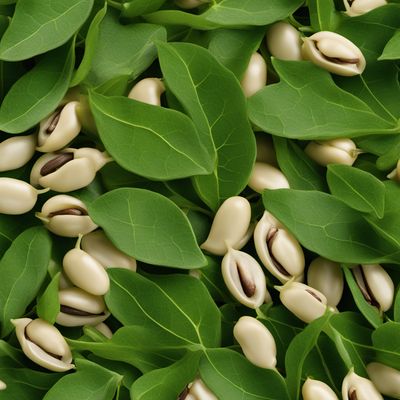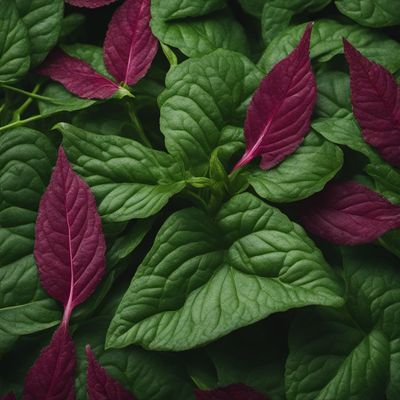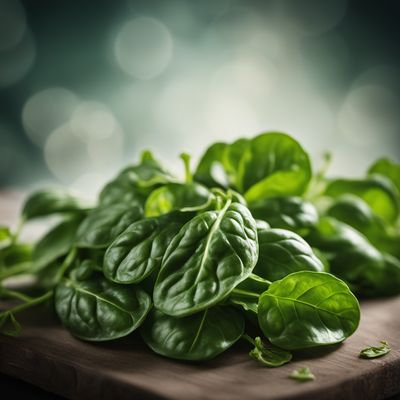
Ingredient
Spinaches and similar-
The Leafy Powerhouse
Spinach is a dark, leafy green vegetable with a tender texture and a mild, slightly earthy flavor. It has a vibrant green color and can be enjoyed raw or cooked. When cooked, spinach wilts down and becomes tender, making it a popular choice for sautés, soups, and casseroles. It is packed with essential nutrients, including vitamins A, C, and K, as well as iron, calcium, and fiber.
Origins and history
Spinach has a long history dating back to ancient Persia, where it was cultivated for its medicinal properties. It later spread to other parts of the world, including Europe and Asia, and became a staple in many cuisines. Spinach gained popularity in the United States during the early 20th century and has since become a beloved ingredient in salads, smoothies, and a variety of cooked dishes.
Nutritional information
Spinach is a nutritional powerhouse, rich in vitamins A, C, and K, as well as iron, calcium, and fiber. It is low in calories and carbohydrates, making it an excellent choice for those looking to incorporate more nutrient-dense foods into their diet. Additionally, spinach contains antioxidants that help protect the body against oxidative stress and inflammation.
Allergens
May cause allergic reactions in individuals with a sensitivity to oxalates.
How to select
When selecting spinach, look for leaves that are vibrant green and crisp. Avoid leaves that are wilted, yellowed, or have signs of decay. Baby spinach leaves are more tender and milder in flavor, while mature spinach leaves have a stronger taste. Choose the variety that best suits your preferences and culinary needs.
Storage recommendations
To keep spinach fresh, remove any rubber bands or ties and place the leaves in a plastic bag or container lined with a paper towel. Store it in the refrigerator's crisper drawer, where it will stay fresh for up to a week. Avoid washing the leaves until you are ready to use them, as excess moisture can cause them to spoil more quickly.
How to produce
Spinach can be easily grown in a home garden or even in containers on a balcony or patio. It thrives in cool weather and can be planted in early spring or fall. Sow the seeds directly into well-drained soil and keep the plants well-watered. Harvest the leaves when they are young and tender for the best flavor.
Preparation tips
Spinach can be enjoyed raw in salads, sandwiches, and smoothies, or cooked in a variety of dishes. It is commonly used in soups, stir-fries, quiches, and pasta dishes. Spinach can also be sautéed with garlic and olive oil as a simple side dish or added to omelets and frittatas for an extra boost of nutrients. Experiment with different recipes and discover the versatility of spinach!
Substitutions
Kale, Swiss chard, and other leafy greens can be used as substitutes for spinach. They offer similar nutritional benefits and can be used interchangeably in most recipes. However, keep in mind that the flavor and texture may vary slightly.
Culinary uses
Spinach is a versatile ingredient that is used in a wide range of cuisines around the world. It is commonly found in Mediterranean, Middle Eastern, and Asian dishes. From Greek spanakopita to Indian saag paneer, spinach adds a vibrant color and a nutritious boost to various recipes. It is also a popular choice for salads, smoothies, and green juices.
Availability
Spinach is widely available in grocery stores, supermarkets, and farmers markets throughout the year. It is cultivated in many regions around the world, including the United States, Europe, and Asia.
More ingredients from this category

Bitterblad leaves
The Bold and Bitter Bites: Exploring the World of Bitterblad Leaves

Black eyed peas leaves
Leafy Goodness

Amaranth leaves
The Nutrient Powerhouse: Exploring the Versatility of Amaranth Leaves

Garland chrysanthemums leaves
Edible Blossoms

Cassava leaves
The Green Delight: Unveiling the Nutritional Powerhouse of Cassava Leaves

Tannia leaves
The Versatile Tannia Leaves

Spinaches
The Mighty Leafy Green

Bitterleaves
The Bitter Beauty

Oraches leaves
The Versatile Green: Oraches Leaves

Sweet potato leaves
The Leafy Marvel

New Zealand spinaches
The Versatile Green Delight